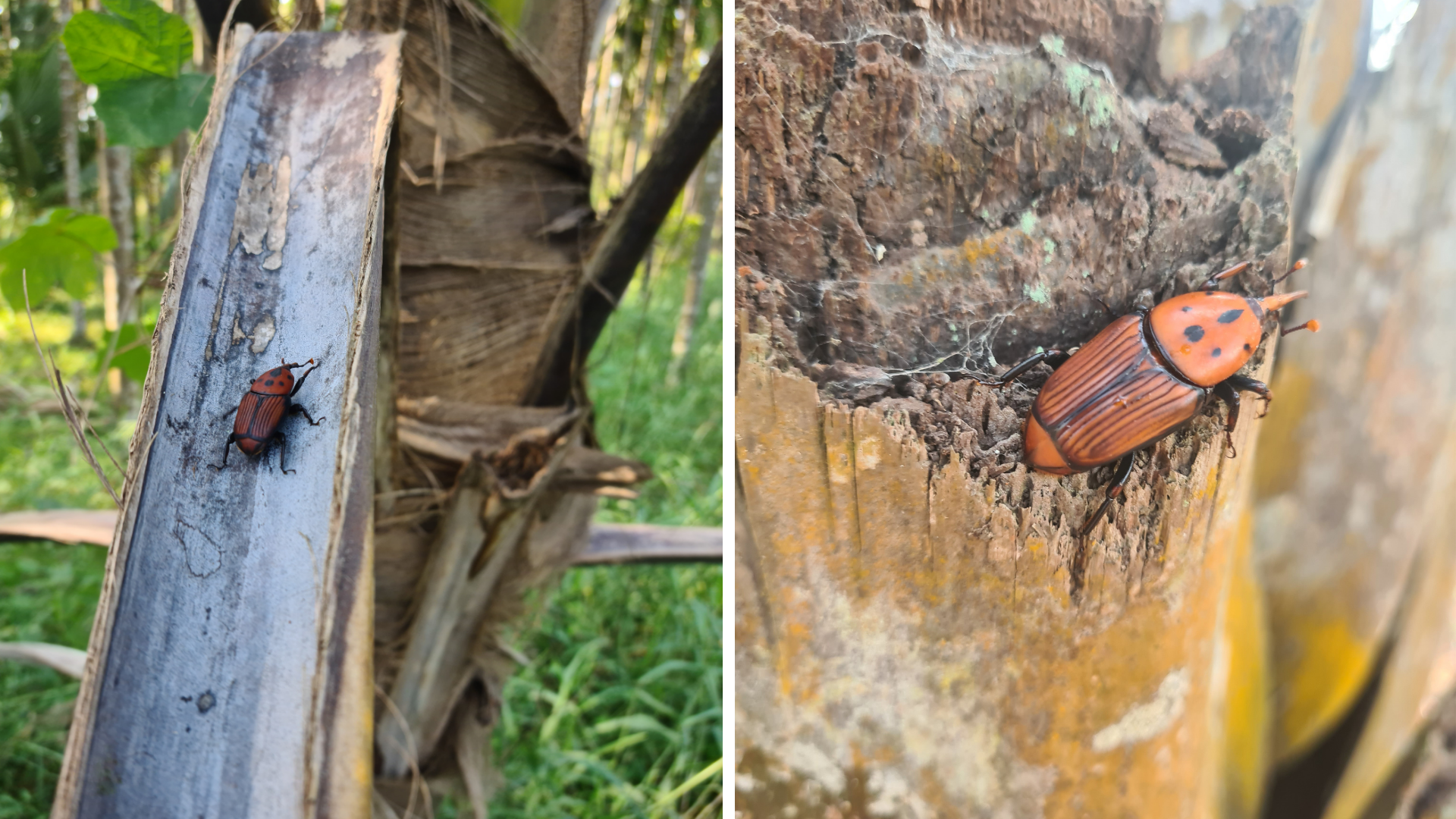Our smart monitoring solution for the Red Palm Weevil has undergone rigorous testing in both lab and arena environments.
The destructive Red Palm Weevil
To find out why it is one of the world’s most destructive agricultural pests, take a look at our blog post announcing our early warning system for Red Palm Weevil.
To ensure our smart monitoring solution is fit for purpose, it was key to rigorously test it with real Red Palm Weevils, a pest unavailable for testing in our own labs in Cambridge, UK. Our CTO Neil and Entomology Lead Dr Aidan Thomas recently headed overseas to conduct experiments with Red Palm Weevil as the pest is rarely found in the UK. They were joined by Dr Jose Romeno Falerio, one of the world’s leading experts on this pest, who assisted us with the lab and arena experiments.
Why testing is important
Our platform technology continuously monitors insects and enables timely intervention. This helps increase productivity across the agriculture, forestry and hospitality sectors. Each smart monitoring system is tailored to suit specific pest behaviours. For Red Palm Weevil, we leveraged our forestry expertise, and added new features to make the monitor work well for Red Palm Weevil in the unique climatic conditions of the Middle East.
We created different pod designs and carefully studied the interaction between each design and the Red Palm Weevil, to be able to maximise the effectiveness of our monitoring solution. The experiments allowed us to collect important reference data to train our AI algorithm in identifying the pest. This series of testing also let us assess the efficacy of our smart dry trap against traditional food-baited bucket traps.
Indoor lab experiments
We initially deployed multiple test designs of the dry smart trap pod in an indoor lab setting. This allowed us to study the Red Palm Weevil’s behaviour as it approached the pod, how it interacted with the pod’s exterior and how easily it entered the pod. Tests were replicated in 24-hour cycles over multiple days, with cameras monitoring the pest behaviour around the clock. Following several weeks of design iterations, we finalised the pod design with a solution that attracts Red Palm Weevil, captures its image clearly, and prevents it escaping.
Arena experiments
The refined design was then tested in an outdoor arena, adding a greater degree of ‘real-world’ conditions to the testing. We compared our optimised dry trap with food-baited (wet) bucket traps, the traditional way of monitoring Red Palm Weevil. Both our pods and the bucket traps were placed inside a large cage, across its longest axis, with Red Palm Weevil added in a uniform distribution to eliminate directional bias. Traps were rotated regularly to balance any influence of environmental conditions. Reviewing results across weeks of testing, we found the Spotta Red Palm Weevil solution caught 30% more weevils compared with food-baited bucket traps.
Next steps
Our dedication to providing effective solutions for some of the world’s most destructive insect pests means we’re continuing further testing of our technology. We’ll be assessing the Pod’s performance against different conventional traps, with field trials in date plantations in the Middle East.
Spotta is bringing its revolutionary early warning systems to facilitate a better pest management regime for Red Palm Weevil. Spotta’s smart monitoring solution will enable the authorities to intervene when the pest is in its early stages of spread. This means lower management costs and less crop damage, saving trees and money. The adoption of our effective remote monitoring systems also reduces the dependence on chemical insecticides, making agriculture more sustainable.
Register your interest in our Red Palm Weevil monitoring system here.

